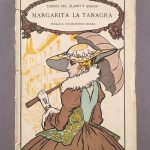One of our previous blog posts introduced our ongoing project to disbind and rehouse nearly 12,000 19th and early 20th-century Spanish plays. The Conservation Lab has just finished this massive disbinding process, and future steps will include cataloging and digitization.
We talked to Jody Waitzman, the General Collections Conservator at the Conservation Lab, who has overseen the unbinding process of the 669 volumes of Spanish plays. Jody shared some of her reflections about this project:
What was it like to start this massive project? What did you find daunting, or exciting?
JW: I picked this project up mid-stream when the staff member who had been overseeing it left for the summer. We have a two-page inventory spreadsheet where we check off each of the 600 plays as the disbinding is completed, and seeing that document for the first time was a little intimidating!
What was it like to work with a team of lab volunteers? What did the workflow look like?
JW: This was an “all hands on deck” kind of project, with volunteers and hourlies pitching in to keep the project moving along. Our goal was to make steady progress and avoid having items linger in the lab longer than necessary, so we worked with one book truck of materials at a time and had 4-5 people putting in at least a few hours a week. I coordinated with CMS [Collection Management Services] to get new batches of plays to the lab just before the previous batch was finished, so we always had something to work on. Initially I was also creating records for each item in our conservation database, which was especially time-consuming as most of the plays were not cataloged/barcoded. Eventually one of our graduate hourlies took on the database work.

What are some of the most challenging parts of the disbinding process, in terms of potential damage to the plays?
JW: Even though they look alike, each bound item is a little different – some have thicker layers of adhesive and are difficult to disband; others are already partially disbound, either intentionally or due to damage from use. Something as simple as whether an item was bound in the morning with a fresh batch of adhesive, or later in the day with a dehydrated, thickened glue, can affect the function of the book and the process of disbinding.
Within each volume, the individual plays vary in size, condition, and paper strength. It was important for each person working on this project to get comfortable with assessing the materials and structure of each volume, and to use the tools and techniques that best suited the disbinding process for that specific volume.
In some cases the paper was so robust and the glue so light that the plays could be separated gently by hand, but most of them required the use of scalpels, steel spatulas, and gentle manipulation. Breaking down the bindings without damaging the individual components – the plays – was definitely a challenge at times.
How do you feel now that the disbinding is complete? How do you feel about passing this project along to its next steps?
JW: I feel grateful for the team of wonderful employees and volunteers who cooperated to get this phase of the project done! We were learning together, and everyone chipped in in whatever way was needed at various points in the project. It’s gratifying to be part of a team effort, especially one that will eventually allow for vastly increased access to such a wonderful, unique collection.









